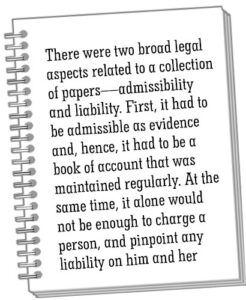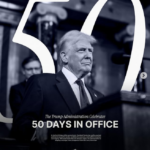REMEMBER the 1991 Jain diaries hawala case, which involved alleged bribes to politicians from several parties. Or the recent cases, when two of the leading business groups, Aditya Birla Group and Sahara India Parivar, were charged with making similar payments. Or the Essar Group emails, which hinted at money being spent to woo influential sections. These, and other such instances, involved prime ministers, former President, chief ministers, central and state-level civil servants, judges, journalists, and even the unsavoury elements within the society like the Maoists and militants.
According to experts, these court cases should, and could, have shaken India, and its political establishment. They could have emerged as the most “sensational scandals” in independent India. Unfortunately, the alleged bribe givers or bribe takers went scot free. In the Jain-Birla-Sahara cases, the apex court decided that there was no evidence to pursue the alleged guilty individuals. It stated that loose sheets and pages, diaries, email printouts, spreadsheets, and collection of typed or handwritten papers collected by the investigators could not be con-sidered evidence. In addition, they could not be presented as the only evidence to charge individuals.
In their book, Loose Pages, authors Sourya Majumder and Para njoy Guha Thakurta detail out how the various courts, including Supreme Court, reached such far-reaching conclusions. They describe how the laws were interpreted to dismiss such larger-than-life allegations against powerful persons. Alok Prasanna Kumar, an advocate, wrote in the book’s introduction that the cases tell the story of how the judiciary and investigating agencies “are not functioning as they are supposed to “, since their “robustness as institutions has been undermined by the government”.
njoy Guha Thakurta detail out how the various courts, including Supreme Court, reached such far-reaching conclusions. They describe how the laws were interpreted to dismiss such larger-than-life allegations against powerful persons. Alok Prasanna Kumar, an advocate, wrote in the book’s introduction that the cases tell the story of how the judiciary and investigating agencies “are not functioning as they are supposed to “, since their “robustness as institutions has been undermined by the government”.
It is unfair to use government in singular, as it refers to the current regime. The Jain hawala case dates back to a period when a Congress regime was in power. Its order came when India underwent through a phase of political instability with fragile coalition governments in power in quick succession in the late 1990s. The Essar emails surfaced when UPA-2 ruled. Only in the Birla-Sahara instances could the current regime be possibly blamed. To be fair, the undermining of the institutions started from the early years of independence.
IN the above examples, the apex court determined what comprised a book, a book of account for business purposes, and how it was maintained. The law seemed clear. Section 34 of the Indian Evidence Act said that a book of account, even in an electronic form, which was kept in the course of business, was relevant for any court. However, just a book of account could not become “sufficient evidence” to charge an individual. What was presented in the above cases were loose sheets and printouts with figures, possibly amounts of money, and abbreviations, possibly initials of specific recipients and givers.
An old judgment, Mukundram vs Dayaram established the definition of a book. It was a collection of papers that was bound together so that it could not be “disturbed or altered” unless it was torn apart. The binding had to be robust. i.e. it wasn’t moveable, and it couldn’t be undone and put together again. Clearly, sheets of paper in a file, clipped, or tied together by a string or thread couldn’t be deemed to be a book. However, a diary possibly could; so could a bound notebook. A 2017 order clarified that a book is one that cannot be “easily detached nd replaced. So spirals and pads were books.
In the Birla-Sahara cases, what was presented in the court were “sheets of papers arranged in two massive files”. So, the court rejected the admissibility of these two volumes. However, the evidence included two spiral notebooks and two spiral pads, which were clearly books. Now the question before the court was whether they were books of account, as are maintained by various businesses for accounting and other purposes. The court relied on an explanation given by Kapil Sibal, a lawyer-politician who is with the Congress party, and who argued on behalf of the Jain brothers.
Sibal argued that in business parlance, a book of account implied a formal statement of money transactions between parties. The exchange of money should arise from formal contracts between them, or fiduciary relationships. The Jain diary, he said, was not a book of account. It detailed out alleged payments received from one set of persons, and those made to another set. In this example, the investigators alleged that the Jains received varying amounts of cash from hawala traders, and distributed varying amounts to politicians. There were no apparent contractual relationships.
THIS meant that a book of account had to compulsorily involve parties that were bound by agreements or laws. It had to have two sides – debit and credit, or where the money went, and where it came from. Thus, it was the kind of a ledger that a moneylender kept, or businesses kept to track cash flows and monitor their operations on a daily, weekly, or monthly basis. One could surely keep a book of account for cash payments to, say, temporary workers, if the debit and credit sides were filled. But not for bribes, which could be one-way transactions, i.e. cash for undefined future favours.
Yet another piece of the puzzle had to fall in place for any book to be considered as a book of account. It had to be kept in the course of business, and updated regularly. In Sibal-speak, this meant that the entries in it were made as soon as the money exchanged hands, or at the time the transactions took place. The lawyer-politician relied on the dictionary meanings of word “account” and phrase “regularly kept”. This was clearly not true of even the spiral notebooks and pads, and diaries where one-sided entries were made long after the transactions were completed.

Obviously, the lawyers from the other side asked the courts to interpret the word “business” in a more expansive manner. A truncated view to see it merely as “regular course of business” would violate the spirit of the law, whose purpose was to convict people, who had committed illegal activities, like transfer of cash through hawala, or payments of bribes. Illegal activities could be recorded irregularly, or ineligibly, not like proper accounts. They could appear as personalised shorthand, or initials. The objective of the perpetrators was to hide the full information.
Sadly, the Supreme Court wasn’t convinced with such logic in the Jain hawala scandal. It went by legal precedents to define the word “business”, and the other connotations that flowed from it about accounts, and books of account. According to it, business related to “any real, substantial and systematic or organised course of activity or conduct with a set purpose”, even if it was an illegal one. Hence, one-off payments, which were not detailed off regularly, were off the limits of the laws. There had to be a pattern of some kind.
In several cases, the apex court went a step further. Even if there was a book, which was about accounts, and it was kept regularly, it still “would not be enough to count as proof of the transaction”. At best, as authors Majumder and Thakurta wrote, “Such a document could serve only as ‘corroborative evidence’, that is, it could only be used as a supporting set of facts for a proposition already established by the ‘main’ set of evidence.” It was not sufficient for any record to be true; it had to be “in accordance with facts”. The truth, in such cases, could become the sacrificial lamb.

One of the earlier precedents for such observations was an order that detailed out why such a book of account could not be construed as sufficient to charge any individual. For the courts, it seemed lopsided that a person could be allowed to “make evidence for himself by what he chooses to write in his own books behind the back of the parties”. There needed to be independent evidence of the transactions, apart from mere personalised entries, even if they were correct and authentic. The fact remained that they were made without the knowledge of those who were named.
This was important in the judiciary’s view because any individual could make a few entries on loose sheets, or even a book of account, to hint at allegations against someone else. This could happen because of self-interest (blame a more powerful person to save oneself), spite and anger (someone has not done a favour, and you name and shame him), gain brownie points (tell your superiors how you got the work done by hook and crook), or greed (you mention payments that actually went into your pockets).
This was evident from the Essar emails and Radia Tapes, in which several influential people from different sections, levelled charges against others, or boasted about their achievements. In such cases, the wheat had to be separated from the chaff. A claim by a senior company executive that he had paid a journalist to publish an article was meaningless unless there was a proper money trail, or a published piece. An instruction by a powerful person to ask someone to file a court case against a competitor was important only if such a case had indeed been filed by the specific individual.

Put together, there were two broad legal aspects related to a collection of papers—admissibility and liability. First, it had to be admissible as evidence and, hence, it had to be a book of account that was maintained regularly. At the same time, it alone would not be enough to charge a person, and pinpoint any liability on him and her. The two were separate, and the courts could decide on them separately. They could first decide if loose pages could be treated as evidence, and then whether they were enough.
AS one of the judgments stated, “From a plain reading of the Section (34 of the Indian Evidence Act) it is manifest that to make an entry relevant thereunder, it must be shown that it has been made in a book, that book is a book of account, and that book of account has been regularly kept in the course of business. From the above Section, it is also manifest that even if the above requirements are fulfilled and the entry becomes admissible as relevant evidence, still, the statement made therein shall not alone be sufficient evidence to charge a person with liability.”
The first part, as the Court observed, is related to the relevance of the entries as evidence, i.e. whether they can be used. The second part is related to it in a negative manner, i.e. “of its evidentiary value”. As Loose Pages contends, “With this differentiation”, and with this reasoning, the Supreme Court dismissed the use of diaries in Jain hawala, and the use of spirals, collection of papers, spreadsheets, emails, and printouts in Birla-Sahara papers.
Alam Srinivas is a business journalist with almost four decades of experience and has written for the Times of India, bbc.com, India Today, Outlook, and San Jose Mercury News. He has written Storms in the Sea Wind, IPL and Inside Story, Women of Vision (Nine Business Leaders in Conversation with Alam Srinivas),Cricket Czars: Two Men Who Changed the Gentleman's Game, The Indian Consumer: One Billion Myths, One Billion Realities . He can be reached at editor@gfilesindia.com


























































